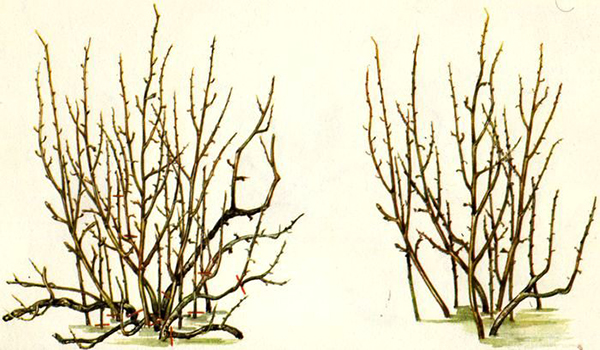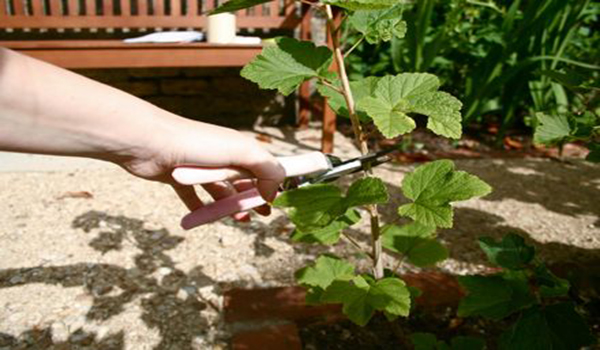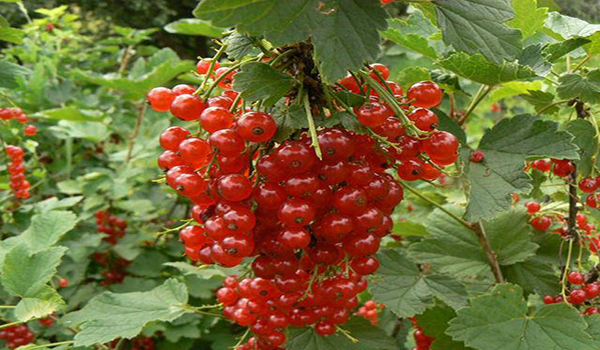Pruning currants in spring or how to get a bountiful harvest
Pruning currants in the spring is extremely important for a quality crop. With a large number of old and diseased branches, the berries become smaller, lose their juiciness and prematurely crumble from the bush. To prevent this from happening, you need to properly care for each plant and remove excess shoots in a timely manner.
Content
When should you prune?
If the removal is done irregularly, the currants will have weak growth. Young shoots will not be able to break through or will be weak enough for abundant fruiting. The thicker the thickets of branches, the greater the likelihood of infection with pathogens. These can be kidney mites, they can infect the microtails with the disease.

Before pruning currants, decide on the age of the plant. The shrub of the current year of planting can be processed for 1-2 buds on all shoots. In the second year of growth, the branches are left uncut.
Why cut currants in the spring? How to properly remove excess without damaging the seedling? Bushes are formed from the moment when a seedling is bought, usually an annual one. Such a seedling has 2-3 branches, no more. It reaches its highest productivity in the fifth year of growth. Older shoots cannot produce a full-fledged crop. That is, in the spring, before the growth phase, branches are removed from the first year of planting. As a result, a bush will form, in which there will be branches from one to five years old.
Why prune?
Pruning is carried out to replace the old growth with new shoots. With such care for currants, the growth of root seedlings occurs, which are stronger and are able to give a full and high-quality harvest of berries. Lateral shoots also begin to grow actively, the plant becomes wider, the number of branches capable of producing a crop increases. Moreover, you need to strive to expand the area of the plant, and not grow it up. A tall bush becomes unstable, branches may break.

It is also necessary to cut off annual seedlings, leaving 2-4 buds. The procedure is also carried out on young seedlings that have just begun to bear fruit. They remove the so-called annual branches that grow from its underground part.
Pruning rules
Black currant
Pruning and shaping in the case of black currants is an important operation. Fruiting of this species is most abundant on parts of the last year's plant; berries on older plants begin to grow small and not so juicy. The main goal is to maintain a certain number of young shoots.
If you are interested in the technique of correctly cutting currants, the video will help you figure it out. In the first year, the seedling is cut almost at the root, leaving a maximum of 5 centimeters from the rhizome. If the seedling is young and healthy, the removed branches can be rooted. This will make it possible to get additional black currant bushes on the site. After this procedure, you will receive about 4 new shoots from 45 centimeters in height.

A bush grown in this way is not cut off in the fall. In the second year of growth, the harvest will be on last year's branches. In addition, several more shoots will grow, growing from the root. In two years, some of the sprouts can weaken and become infected with diseases. They will have to be cut out before the winter of the second year. Currant pruning is done at the end of the growing season. Sick and old branches are cut off at the very root, leaving no stumps.In this case, you must be careful not to hook the rhizome itself.
Every year after winter, at least three old branches are removed, and monitor the number of root shoots. They also need to be thinned out, forming a wide bush. The care process should be carried out in such a way that about 12-15 branches of different ages remain. The number of annual shoots should always be higher than older ones.
Red currant
Red currants do not require such frequent crown renewal as black currants. However, cropping is still needed. It should start a year after planting, when the bush is already large and sufficiently rooted. Most often it is grown to form a bush. In this option, you need to worry about the renewal of old shoots with young ones.

Before cutting the currants, zero shoots are removed, and then old and diseased branches. The shrub must be well ventilated, therefore, depending on the size and age, 3-5 branches are removed from the shrub per season. To get rid of zero shoots should be at the root, and when cutting out lignified parts, the cut site is processed with a pitch.
If currants are grown in the form of a cordon, when young branches are located on the main strong shoot in the form of a fan, pruning is done in late spring or early June. Lateral shoots are cut 10-15 centimeters. A good result will be obtained by truncating the tops of each of the shoots, which will greatly enhance their growth.
Video "How to properly cut currant bushes"
In the video, an expert gardener shares his experience in the field of cutting currants. The specialist will explain why it is necessary to do this and how.
